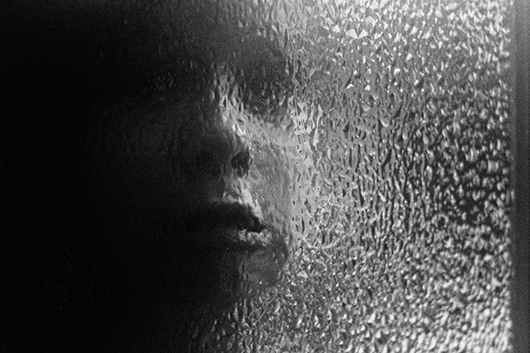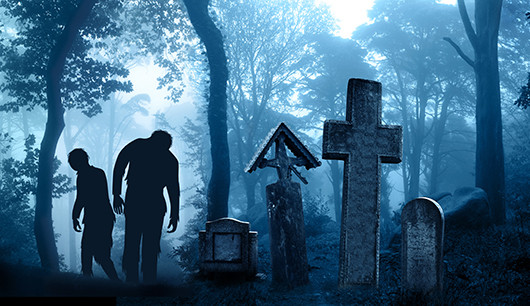How to Create a Horror Comic Book
August 4, 2021
Throughout the last 60 years, horror comics like Swamp Thing, The Vault of Horror, and Hellboy, have scared readers and inspired countless films and prose novels. Fans of horror comic books love the grotesque and macabre imagery, gritty dialogue, bizarre plots, and fascinating characters featured in this genre. Every year writers and artists produce new horror comics ideas, proving that this genre remains a source of delight for novice and seasoned comic book readers.
If you are a fan of the horror genre and have a twisted tale or supernatural story to tell, consider creating your own comics to thrill readers. By incorporating classic horror elements into your own comic book and terrifying visual imagery into your final product, you’ll end up with a finished piece that’ll scare the pants off your audience. Find out how to create a horror comic book so that you can release the story in your head that is just dying to get out.
What is a Horror Comic?
A horror comic is a comic book, comic strip, or graphic novel that falls within the horror genre of literature. Typical elements of a horror comic include a frightening setting, a protagonist with whom the audience can relate, a good story filled with suspense and unexpected twists and turns, and finally, a villain, whether concrete or abstract, that represents a deeply held human fear.
One of the hallmarks of horror comic books, and the reason they remain popular, is that they allow readers to explore their very worst fears in a non-threatening way. The best thing about comic book stories is that they are a great way for you to release fear and anxiety and process terrifying events without having to live them in real life.

Creating a Terrifying Story
The first step to creating any print or digital comic book is to write the story. It is especially important to craft a tense, engaging narrative in the horror genre that you can later supplement with vivid imagery. One thing that many of your favorite comic book creators do is keep a notebook where they jot down their ideas and new stories before crafting them into a solid narrative.
For many first time comic book artists, this can be a great way to collect your ideas and help you craft a richer, more engaging story. It is also the ideal place to draft a rough storyboard so that you can visually represent the timeline and narrative flow. Consider the following elements when writing your horror comic book tale.
Subgenre
Before you begin writing, decide on your subgenre. Within the overarching horror genre, there are specific types of horror stories. Your subgenre will influence the other elements of your story. Typical horror subgenres include:
- Dark Fantasy
- Gothic
- Paranormal
- Occult
- Survival
- Post Apocalyptic
- Science Fiction
Characters
When writing your horror comic script, focus on your characters. Readers need to see themselves in the main characters and develop an emotional connection with them. As your characters move through the story, you want readers to feel tension and suspense as they live alongside the people (or creatures) in your narrative. Study archetypal character types and include them in your creative writing. Using archetypes as a baseline for characters automatically makes your story more relatable and familiar.
Dialogue
Horror comic books rely mostly on dialogue to tell a great story. Although you may have sections of expository text or bubbles with sound effects, most of your narrative is laid out through what the characters say to each other. Decide what type of dialogue you want to use. Use word choice and dialect to convey the setting. Ensure that each character has a unique tone and speech pattern. Give your dialogue life by making it stylized.
Setting
The setting of your horror comic is important. A setting primes the reader and is a good way to set the tone of a story. A horror comic set in a dystopian future feels unsettling and claustrophobic, whereas a supernatural gothic tale set in Victorian England is mysterious and suspenseful.
When creating a setting, bring in elements that transport the reader into the location of your narrative. Worldbuilding is an important thing to focus on in fiction writing. Crafting a setting that sucks your reader into an entirely separate universe is the hallmark of a great horror comic. Learn how to world-build effectively to bring your terrifying tale to life.
Narrative
Horror narratives are exciting. Instead of following a prescribed formula, horror stories are expected to go off the rails and surprise the reader. In horror, the best stories shock the reader and leave them in disbelief, so when writing your horror comic, feel free to subvert expectations and include crazy twists and turns.
One thing to pay attention to when crafting your narrative is that you don’t throw in a twist without building up to it first. Horror fans love the genre because of the building of tension, followed by the payoff of the twist ending. If you include a Big Reveal, make sure your narrative spends time building up to it properly. In addition, decide early on whether you want your story to appeal to adults, teenagers, or kids and develop your plot at the level appropriate to your audience.
Including Visceral Imagery
After you’ve crafted your narrative, it is time to illustrate your horror comic story. Before creating any images, decide on the format for your horror comic book. Study different panel layouts and decide how you want your comic to look on the page. Pay attention to formatting your script and plan out how your story is going to physically unfold for the reader. Arrange the layout of speech bubbles and sound effect bubbles, so they create maximum suspense. Once you’ve planned everything out, you can get started on the visual elements of your horror comic.
Comic book art is created using either digital illustration programs or pen and paper. Opt for an online or downloadable illustration software like Sketchbook, Adobe Illustrator, Canva, or even a site like Pixton to create your horror images. Alternatively, you can go old school by using various artistic mediums to draw your creatures by hand.
However you create the pictures in your horror comic, it is important to use them to supplement your narrative. Your art should bring the horror elements of your story to life and place them squarely in the reality of your reader. Use vibrant, off-putting colors to create a sense of unease. Go full-on grotesque when illustrating creatures and violent scenes, or create tension by leaving your characters shadowed in terrifying places. Remember, your audience wants to be both disgusted and entertained when they read a horror comic. They want to experience their worst nightmare while sitting safely at home.
Printing Your Horror Comic Book
When your horror comic illustrations are complete, and you have your dialogue laid out on the page, your next step is to upload the complete document into the proper format for printing.
Utilize Comix Well Spring’s helpful staff who can help you during the printing process. They’ll walk you through formatting and sizing questions and help you choose the right paper and binding for your horror comic or graphic novel. For shorter comics, under 64 pages, Comix Well Spring suggests saddle stitch binding, but for longer comics and graphic novels, the square-bound option works more effectively. Once you have decided on your horror comic’s specifications, you can put in your order and receive your professionally printed square-bound horror comic book in about two weeks.
Make the Scares Jump Off the Page
When you choose Comix Well Spring to print your horror comic book, the scares will jump right off the page and into audience nightmares. Due to our high-quality 60# bright paper, your ghastly illustrations will horrify readers and linger long after they put the book down. We make professional printing easy with our user-friendly ordering system, and our helpful staff is ready to answer any questions you might have about the printing process.
Chat with our customer service or fill out the contact form online when you are ready to get that horror story out of your head and into a published piece.

